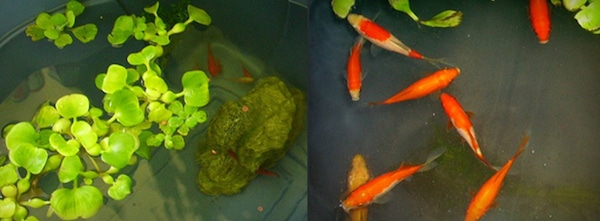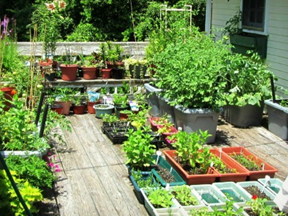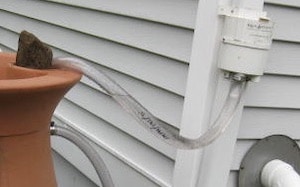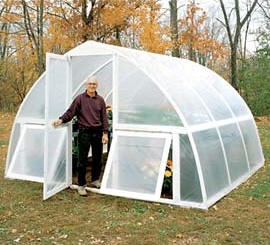Updated: October 31, 2020
This is a guest article by Karen B from the blog Been Gardening…Bin Gardening on using fish water for plants.
Home aquaponics systems are growing in popularity as people seek to grow more of their own food in backyards and patio spaces.
Aquaponics (Latin translation: water working) involves a symbiotic relationship between fish and plants. In aquaponics, fish waste water is circulated to plant roots in a container. The roots filter the water, and then it’s re-circulated back to the fish tank.
Aquaponics is an efficient system that’s environmentally friendly because it wastes nothing and grows healthy plants and fish.
I use a modification of this system that I call carponics. Take aquaponics and replace it with C-A-R-P and you have carponics.
Let’s take a sec to get the legal words out of the way. This article may contain affiliate links. That means if you click and buy from my partners, I will make a tiny amount of money at no cost to you. This in no way affects my recommendations.
Carp are a type of fish related to goldfish and koi. Both of these fish work well in my system because they are hardy, high bio-load fish, which means they produce a lot of waste. In carponics, it’s the waste material that fertilizes the plants.
Related: Neptune’s Harvest Liquid Fertilizer Review
The two main differences between aquaponics and my carponics are:
- The water I use for container plants is not circulated back to the fish tank. Instead, I capture it in containers and use it to fertilize plants.
- I am not cultivating the fish for food – only for their waste.
My carponics system is rewarding us with fresh, delicious vegetables …
— Karen B
This low-tech, low-cost system is simple to set up and maintain. Plus, it’s free of toxic chemicals.

In the past, I’ve used fish effluent on container plants and notice a positive difference in the yield and quality of my vegetables, flowers, and herbs.
This is the first season I am using the run-off from the container plants on ground plantings.
Use fish water for plants for fast growth
The reason that the fish effluent water improves the plant growth is three-fold. Fish water:
- Is freshly oxygenated and plant roots need oxygen for vitality (preventing root rot).
- Is de-chlorinated (allowing more beneficial soil bacteria to thrive).
- Contains macro- and micronutrients that feed the plants.
I have had good results with eight feeder goldfish and one to two small koi in a tank on my deck under shelter. For my tank set up, see this description.

Fish water contains macro- and micronutrients that feed the plants.
You can use the tank water for irrigation about two weeks after you’ve added the fish. It’s up to you if you want to water your plants manually or use an automated set up.
The simplest method
The simplest way to use fish water for plants (if you have a smaller garden area, such as a deck or patio garden) is to get an open-top watering can and dip it in the tank. Of course, you have to be careful not to touch the fish.
When using this method, you need to prepare another bin with refill water for the fish tank before you begin watering. You should make sure to add de-chlorination drops and let the water temperature rise, if needed.
Obviously, it’s important to do this so you don’t shock the fish when adding new water to the main tank.
Siphoning fish water
Another method for irrigating is to use an aquarium gravel cleaner or siphon pump to get the water into watering cans to water plants manually. For a larger, more extensive container garden, you could use an automated system.

Harvest Water From Your Roof
All my articles on rain barrels and rain barrel downspout diverters.
In my current set-up, I am happy to water manually because it gives me an opportunity to check on the growth of every container plant and spot possible problems in time to make adjustments in light, water, or nutrients.
Though it is still fairly early in the growing season, my carponics system is rewarding us with fresh, delicious vegetables, vibrant ornamental fish, low-cost irrigation and fertilizer, and peace of mind knowing that our vegetables are growing naturally and abundantly without the use of harmful chemicals.
Karen B. lives in the Atlanta, GA area, where she writes about gardening in self-watering containers on her blog, Been Gardening…Bin Gardening.
Related articles you might enjoy:
- Learning from Polyface Farm
- Raising Chickens: How many do you need?
- Making Compost in a Chicken Coop, a.k.a., Deep Litter
Suburban Hobby Farmer is a participant in the Amazon Services LLC Associates Program, an affiliate advertising program designed to provide a means for sites to earn advertising fees by advertising and linking to amazon.com.
